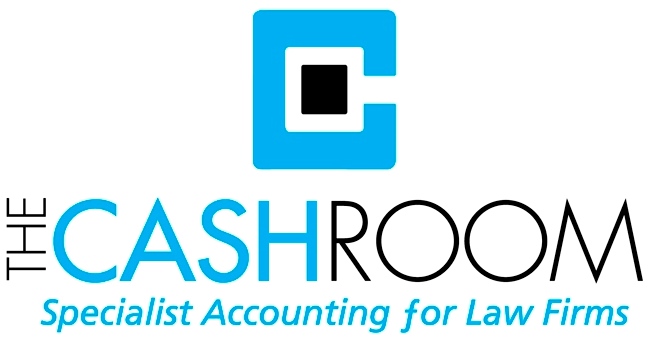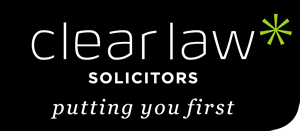The Impact of Outsourcing Law Firm Accounting Services to Third Party Experts
When the time comes to consider outsourcing the accounting services of your business, naturally you’ll have some concerns about what this can mean for you, both in the short and long term.
 After all, change can bring risk, so you need to be confident that the strategy you implement will be worth it. Speaking to third party experts about outsourcing your account services should reassure you that the impact will be beneficial on your business moving forward.
After all, change can bring risk, so you need to be confident that the strategy you implement will be worth it. Speaking to third party experts about outsourcing your account services should reassure you that the impact will be beneficial on your business moving forward.
Some law firms worry that outsourcing their accounting services to a third party could have a detrimental impact on the business. But in reality, the truth makes for a much more pleasant read.
Outsourcing doesn’t mean you’ll lose control of your cashiering services, in fact it’s the opposite. Firms are able to gain a greater understanding of what is going on with regards to their management accounts. This in turn brings even more insights as third party experts are able to help the firm identify:
- What area(s) of the business generate the most revenue
- What area(s) of the business bring in the most money quickly
- What area(s) of the business aren’t profitable
- Where money is being spent and the return on investment
- Area(s) of growth
 These insights help your business to run efficiently and continue to grow, while some of your competitors lay still in the water.
These insights help your business to run efficiently and continue to grow, while some of your competitors lay still in the water.
Outsourcing doesn’t have to be costly and can often save you money and more importantly fee earner time. Companies offering outsourcing accounting services are experts and have streamlined processes to ensure maximum efficiency. Furthermore, they understand best practices which can be passed on as additional savings to you. So, as you can see, the impact of outsourcing a law firm’s accounting services to third party experts has a positive effect on the way the business can grow and thrive.
With the introduction of more stringent Data Protection Laws and the General Data Protection Regulation (GDPR), ensuring data security is paramount these days. Throw into the mix that thousands of criminals are attempting to hack into law firm IT infrastructure, then your concern regarding the impact outsourcing would have would seem justified.
However, third party experts have this area covered too. They have the policies, procedures and technology all in place to ensure that any data they handle is safe and secure, away from the prying eyes of those who wish to exploit it.
Won’t outsourcing make managing cashiers harder? You may think this is the case, but it couldn’t be further from the truth. The right outsourced legal accounts third party will remove that burden.
So, we originally wondered what the impact of outsourcing law firms accounting services to third party experts would have. Hopefully we have shown that it needn’t be doom and gloom. In fact it can have a positive impact on your business, helping it to grow and adapt in a changing legal sector, by enabling solicitors to run their businesses better and to earn fees. The experts will identify areas of focus and working together you can help expand your business whilst working efficiently and effectively.
Here at The Cashroom, our experienced team can be on hand to unburden busy law firms by-
- Helping firms to prepare and then monitor performance against annual budgets
- Producing cashflow projections
- Conducting fee and performance analysis
- Providing commentary and advice on monthly performance
- Preparing for year-end accounts
- And more…
If you are considering outsourcing your law firm accounting and would like some more information about how The Cashroom can help, please get in touch.
If you are regulated within the English and Welsh market then please contact:
Alex Holt E: alex.holt@thecashroom.co.uk t: 07817 420 466
If you are regulated by the Law Society of Scotland, please contact:
Gregor Angus E: gregor.angus@thecashroom.co.uk t: 07875 598 593

 1. Starting a new job can be very stressful, so have a look at how you bring new staff into the business at the outset. Only 12% of employees think that their employers do a good job of onboarding them (Gallup State of the Workplace Study 2017). Could you invite new starts to a social get together in the weeks leading up to their start date? Even a chat over lunch will make them less anxious about starting with you. Could you provide them with some sort of ‘welcome pack’ to make them feel part of the team as quickly as possible? Could you ask someone to be their ‘buddy’, that they can ask for simple help and assistance when they start, e.g how on earth does that coffee machine work?!
1. Starting a new job can be very stressful, so have a look at how you bring new staff into the business at the outset. Only 12% of employees think that their employers do a good job of onboarding them (Gallup State of the Workplace Study 2017). Could you invite new starts to a social get together in the weeks leading up to their start date? Even a chat over lunch will make them less anxious about starting with you. Could you provide them with some sort of ‘welcome pack’ to make them feel part of the team as quickly as possible? Could you ask someone to be their ‘buddy’, that they can ask for simple help and assistance when they start, e.g how on earth does that coffee machine work?! 3. Some employers are fortunate to have deep pockets, or access to investment cash for wellbeing, allowing them to invest in a gym in the office, subsidise gym memberships, or have personal trainers or dieticians come in to the office regularly. However, you really don’t need to go to that extent to encourage your employees to spend a bit more time moving and exercising regularly during their working day, thereby improving their wellness. How about encouraging walking meetings: a brisk 10 – 15 minutes round the block to chat through something you would normally do while sitting slumped in a meeting room to do. You will likely arrive back in the office refreshed, or at least a little more awake, and ready for the next task. Top tip – an initiative like this requires a top-down adoption, i.e. the leaders and managers of the business need to embrace it and start doing it regularly, to help instil into more junior staff that it is acceptable, and in fact is to be encouraged!
3. Some employers are fortunate to have deep pockets, or access to investment cash for wellbeing, allowing them to invest in a gym in the office, subsidise gym memberships, or have personal trainers or dieticians come in to the office regularly. However, you really don’t need to go to that extent to encourage your employees to spend a bit more time moving and exercising regularly during their working day, thereby improving their wellness. How about encouraging walking meetings: a brisk 10 – 15 minutes round the block to chat through something you would normally do while sitting slumped in a meeting room to do. You will likely arrive back in the office refreshed, or at least a little more awake, and ready for the next task. Top tip – an initiative like this requires a top-down adoption, i.e. the leaders and managers of the business need to embrace it and start doing it regularly, to help instil into more junior staff that it is acceptable, and in fact is to be encouraged! 5. Finally, make seasonal events (e.g Easter, Halloween, Christmas) fun! Think about giving out Advent Calendars or Easter Eggs to all staff – not a huge investment, but definitely a morale booster – or having a dress down/up(!) day for Halloween. This can encourage interaction amongst employees, lift spirits in the office, and at the same time be used to generate some money for a charity of your choice.
5. Finally, make seasonal events (e.g Easter, Halloween, Christmas) fun! Think about giving out Advent Calendars or Easter Eggs to all staff – not a huge investment, but definitely a morale booster – or having a dress down/up(!) day for Halloween. This can encourage interaction amongst employees, lift spirits in the office, and at the same time be used to generate some money for a charity of your choice. There are catastrophic implications of not defending against data breaches and cybercrime. But, before you can put stringent security processes in place, you have to understand the risks.
There are catastrophic implications of not defending against data breaches and cybercrime. But, before you can put stringent security processes in place, you have to understand the risks. Property hijackings (where criminals pose as owners) are escalating. In many cases, criminals will rent a property and steal the landlord’s post. They then use this to pose as the real owner and sell the house to cash buyers.
Property hijackings (where criminals pose as owners) are escalating. In many cases, criminals will rent a property and steal the landlord’s post. They then use this to pose as the real owner and sell the house to cash buyers. Malware attacks – where malicious software is installed on a user’s machine – can be extremely damaging; to your day-to-day operations, your reputation, and your bottom line. Ransomware attacks – an aggressive form of malware which prevents access to systems unless a payment is made – can be even worse.
Malware attacks – where malicious software is installed on a user’s machine – can be extremely damaging; to your day-to-day operations, your reputation, and your bottom line. Ransomware attacks – an aggressive form of malware which prevents access to systems unless a payment is made – can be even worse. Information security certification (e.g. ISO 27001 or Cyber Essentials) helps to protect client and employee data. This won’t just keep sensitive data secure, it will also demonstrate to clients (and the ICO) that you take your responsibilities seriously.
Information security certification (e.g. ISO 27001 or Cyber Essentials) helps to protect client and employee data. This won’t just keep sensitive data secure, it will also demonstrate to clients (and the ICO) that you take your responsibilities seriously. At
At  Outsourcing to The Cashroom has been painless. So easy to deal with accommodating everything that we need to do, when we need to do it, whilst keeping us on the right side of the vast array of regulations.
Outsourcing to The Cashroom has been painless. So easy to deal with accommodating everything that we need to do, when we need to do it, whilst keeping us on the right side of the vast array of regulations.  At the same time, the total cost of employing in-house cashiering personnel is expensive. Because, in addition to wages, you also have to take the costs of recruitment, induction, training, mentoring, sick pay, maternity cover, holiday cover, pension contributions, and National Insurance into consideration.
At the same time, the total cost of employing in-house cashiering personnel is expensive. Because, in addition to wages, you also have to take the costs of recruitment, induction, training, mentoring, sick pay, maternity cover, holiday cover, pension contributions, and National Insurance into consideration. The Cashroom offer an invaluable service for any solicitor’s firm. Their approach is efficient, professional and responsive. They have allowed us to deal with rapid growth by taking on all accounts functionality.”
The Cashroom offer an invaluable service for any solicitor’s firm. Their approach is efficient, professional and responsive. They have allowed us to deal with rapid growth by taking on all accounts functionality.” The Cashroom has definitely been a good business move, not only because of efficiency but also in relation to compliance which can be daunting at times.”
The Cashroom has definitely been a good business move, not only because of efficiency but also in relation to compliance which can be daunting at times.” We operate a business which requires efficiency and certainty of service. The Cashroom has augmented our own internal accounts team, taking control of key elements and working closely to provide a seamless service to us.
We operate a business which requires efficiency and certainty of service. The Cashroom has augmented our own internal accounts team, taking control of key elements and working closely to provide a seamless service to us.  How quickly can you get up and running?
How quickly can you get up and running? We have been using The Cashroom’s services for three years now. We brought them in to provide a secure, efficient, compliant cashiering function to support our growing business with their flexible resource model.
We have been using The Cashroom’s services for three years now. We brought them in to provide a secure, efficient, compliant cashiering function to support our growing business with their flexible resource model.  In the Cyber Security Breaches Survey 2019, conducted by the Department for Digital, Culture, Media and Sports (DCMS), 32% of UK businesses had reported a cyber security breach in the last 12 months. Over a third admitting this breach led to a loss of data or assets.
In the Cyber Security Breaches Survey 2019, conducted by the Department for Digital, Culture, Media and Sports (DCMS), 32% of UK businesses had reported a cyber security breach in the last 12 months. Over a third admitting this breach led to a loss of data or assets. ‘Fraud the Facts 2019’ report highlighted that email (malicious redirection) fraud has become a lucrative business. Fraudsters use emails to convince a home seller or law firm to change their bank details before a payment is made resulting in £123million lost in 2018.
‘Fraud the Facts 2019’ report highlighted that email (malicious redirection) fraud has become a lucrative business. Fraudsters use emails to convince a home seller or law firm to change their bank details before a payment is made resulting in £123million lost in 2018. We do not have a ‘system’ or software that we use, we simply access the accounts part of your existing Practice Management System remotely. So, all you need is a legal practice management system of some sort, and a means of us accessing it remotely. We also have a secure client portal which all of our clients are on, creating a secure environment for both The Cashroom and client to communicate without the cyber risks of email. This also avoids having to protect sensitive data via email. Training can also be given to ensure you are comfortable when using the portal.
We do not have a ‘system’ or software that we use, we simply access the accounts part of your existing Practice Management System remotely. So, all you need is a legal practice management system of some sort, and a means of us accessing it remotely. We also have a secure client portal which all of our clients are on, creating a secure environment for both The Cashroom and client to communicate without the cyber risks of email. This also avoids having to protect sensitive data via email. Training can also be given to ensure you are comfortable when using the portal. We allocate each client to a cashiering team, headed up by a very experienced senior cashier, essentially your ‘Head Cashier’. They will have a small team of people who will work with your firm, in order that holidays, sickness cover etc, are not a problem for you. You will get to know the two or three people working with your firm very quickly, and build a relationship with them. You can pick up the phone or send a query via our secure client portal to these selected people at any point and be ensured that someone will always be about to help.
We allocate each client to a cashiering team, headed up by a very experienced senior cashier, essentially your ‘Head Cashier’. They will have a small team of people who will work with your firm, in order that holidays, sickness cover etc, are not a problem for you. You will get to know the two or three people working with your firm very quickly, and build a relationship with them. You can pick up the phone or send a query via our secure client portal to these selected people at any point and be ensured that someone will always be about to help. change makes the difference between whether you sink or swim. One way that savvy firms are choosing to adapt is by outsourcing essential business tasks, like legal cashiering.
change makes the difference between whether you sink or swim. One way that savvy firms are choosing to adapt is by outsourcing essential business tasks, like legal cashiering. Maximise your resource: Benefit from a cost based on the actual activity and skill level your firm requires, rather than having to fund sufficient senior cashiering resource to deal with complex, high-risk elements, while using that same resource to carry out the more mundane, junior tasks.
Maximise your resource: Benefit from a cost based on the actual activity and skill level your firm requires, rather than having to fund sufficient senior cashiering resource to deal with complex, high-risk elements, while using that same resource to carry out the more mundane, junior tasks.  addressing. According to research 66% of solicitors feel high levels of stress in their jobs, and each year in the UK, 70 million workdays are lost to mental illness.
addressing. According to research 66% of solicitors feel high levels of stress in their jobs, and each year in the UK, 70 million workdays are lost to mental illness. Almost half of all the calls received (48%) were made by legal professionals with less than five years’ qualified experience. The Junior Lawyers Division’s resilience and well-being survey also found a huge number of younger legal professionals struggling with work related mental health issues. This research clearly shows that the well-being of people in the legal sector spans all knowledge ranges and doesn’t discriminate between the newly qualified and the more experienced lawyer.
Almost half of all the calls received (48%) were made by legal professionals with less than five years’ qualified experience. The Junior Lawyers Division’s resilience and well-being survey also found a huge number of younger legal professionals struggling with work related mental health issues. This research clearly shows that the well-being of people in the legal sector spans all knowledge ranges and doesn’t discriminate between the newly qualified and the more experienced lawyer. 40% reduction in new buyer enquiries. Although the net balance figures for March, April and May were slightly more buoyant with only a -26% net balance of new buyer enquiries. It’s clear that buyers are reluctant to declare an interest in property until October 31st when they know what the country is doing next.
40% reduction in new buyer enquiries. Although the net balance figures for March, April and May were slightly more buoyant with only a -26% net balance of new buyer enquiries. It’s clear that buyers are reluctant to declare an interest in property until October 31st when they know what the country is doing next. There is light at the end of the Brexit tunnel, and we’re not talking about deal or no deal. Reports have suggested that transactions are slowly starting to pick up. The number of approved sales per branch were eight in April, an increase on the seven per branch the previous month.
There is light at the end of the Brexit tunnel, and we’re not talking about deal or no deal. Reports have suggested that transactions are slowly starting to pick up. The number of approved sales per branch were eight in April, an increase on the seven per branch the previous month.
 I recently ran Manchester marathon. I wasn’t fast, and I wasn’t last – 3hr 31 min to be precise – but sometimes the time is irrelevant . I ran a marathon in 2014 (Edinburgh) and have run the distance a few more times at the end of Ironman triathlons (pre-– children!), but this time around was a little different. I haven’t slept much in the last few months (see earlier reference to children!), and had a busy few months at work and at home, so training was ‘minimalistic’ to say the least. However, aside from a ‘moment’ a few weeks before race day, I knew that I could get round alright. It wouldn’t be a PB, but I would complete the distance. And that’s when I realised that something had changed in the last few years – my perspective. Being able to run a marathon on minimal training was now my ‘new normal’, and I think there is a lesson in that: what you perceive as your ‘normal’ can vastly change over time, and your limits are almost certainly not where you think they are.
I recently ran Manchester marathon. I wasn’t fast, and I wasn’t last – 3hr 31 min to be precise – but sometimes the time is irrelevant . I ran a marathon in 2014 (Edinburgh) and have run the distance a few more times at the end of Ironman triathlons (pre-– children!), but this time around was a little different. I haven’t slept much in the last few months (see earlier reference to children!), and had a busy few months at work and at home, so training was ‘minimalistic’ to say the least. However, aside from a ‘moment’ a few weeks before race day, I knew that I could get round alright. It wouldn’t be a PB, but I would complete the distance. And that’s when I realised that something had changed in the last few years – my perspective. Being able to run a marathon on minimal training was now my ‘new normal’, and I think there is a lesson in that: what you perceive as your ‘normal’ can vastly change over time, and your limits are almost certainly not where you think they are. You don’t need to go in all guns blazing, signing up to climb Mount Everest next week, but decide what it is you want to achieve, and start taking small, incremental but consistent steps towards it, building momentum as you go. Those daily, weekly or monthly steps towards the goal, over time, are what make the difference. Once you have that consistent practice, what once seemed like a pie in the sky idea will come clearly into view, and be more than achievable. And once achieved, your perspective will have changed, in a positive way, forever. Even if your goal was to start a new business, and it wasn’t ultimately successful, going through the process, and making that your ‘new normal’, will change your outlook, and help you believe that it is not beyond your capabilities should a better opportunity arise in the future.
You don’t need to go in all guns blazing, signing up to climb Mount Everest next week, but decide what it is you want to achieve, and start taking small, incremental but consistent steps towards it, building momentum as you go. Those daily, weekly or monthly steps towards the goal, over time, are what make the difference. Once you have that consistent practice, what once seemed like a pie in the sky idea will come clearly into view, and be more than achievable. And once achieved, your perspective will have changed, in a positive way, forever. Even if your goal was to start a new business, and it wasn’t ultimately successful, going through the process, and making that your ‘new normal’, will change your outlook, and help you believe that it is not beyond your capabilities should a better opportunity arise in the future. So, while I would encourage you all to run a marathon – I truly believe anyone can do it with the right preparation and dedication to training – your goal may be something quite different to that. The same principles apply though: identify what it is you want to achieve, commit to it, then train for it in a deliberate and consistent way. Very philosophical I know, but life is short, so set about doing the things you have always wanted to do. And remember, nothing changes if nothing changes.
So, while I would encourage you all to run a marathon – I truly believe anyone can do it with the right preparation and dedication to training – your goal may be something quite different to that. The same principles apply though: identify what it is you want to achieve, commit to it, then train for it in a deliberate and consistent way. Very philosophical I know, but life is short, so set about doing the things you have always wanted to do. And remember, nothing changes if nothing changes. Under the new rules the concept of unpaid or incurred disbursements has been removed, meaning disbursements are only to be considered as disbursements when paid.
Under the new rules the concept of unpaid or incurred disbursements has been removed, meaning disbursements are only to be considered as disbursements when paid. extremely busy and sometime stressful work we all have commitments and strains to deal with in our personal life too. It is vital for all of us to take a step back when needed and deal with our own health. And even if we do not have any existing mental health problems, ensure that we are all looking after our mental health as we do our physical health.
extremely busy and sometime stressful work we all have commitments and strains to deal with in our personal life too. It is vital for all of us to take a step back when needed and deal with our own health. And even if we do not have any existing mental health problems, ensure that we are all looking after our mental health as we do our physical health. At The Cashroom we have a confidential phone line available to staff which goes to trained mental health professionals that they can call 24 hours a day (you wouldn’t let yourself or even a colleague treat your cancer would you?).The Mindful Employer creates a safe place for staff to call and also has a lot of useful information on its website for staff. We also encourage all staff to look after their mental wellbeing by allowing time during the working day for staff to complete a daily mile outside in the fresh air and we have fresh fruit delivered weekly. We also have our mental health charter displayed in the office for staff to see.
At The Cashroom we have a confidential phone line available to staff which goes to trained mental health professionals that they can call 24 hours a day (you wouldn’t let yourself or even a colleague treat your cancer would you?).The Mindful Employer creates a safe place for staff to call and also has a lot of useful information on its website for staff. We also encourage all staff to look after their mental wellbeing by allowing time during the working day for staff to complete a daily mile outside in the fresh air and we have fresh fruit delivered weekly. We also have our mental health charter displayed in the office for staff to see. I’m from the generation which used to do everything by landline and letter, so obviously I’ve experienced huge amounts of change over the last 30 years. The latest change within our business relates to our desire to remove as much as possible email communication from our toolkit. We have developed a secure client portal to communicate with our clients, this new technology is also a wonderful task management tool.
I’m from the generation which used to do everything by landline and letter, so obviously I’ve experienced huge amounts of change over the last 30 years. The latest change within our business relates to our desire to remove as much as possible email communication from our toolkit. We have developed a secure client portal to communicate with our clients, this new technology is also a wonderful task management tool. get back fully operational.
get back fully operational. It is, to some extent, the benefit of our clients not having to worry about holiday or sickness cover again, or the time drain of recruiting, training and managing members of staff, or being able to scale up or down without worrying about the workload implications for employees. But it is more than that. We have taken on the cashroom or ‘finance’ function of 170 law firms, of all shapes and sizes, across the length and breadth of the country. That has allowed us to review how those firms have previously done things, and pick and choose the best and most efficient processes, implementing them into our standard process from which all of our clients will benefit. That, I believe, is where some of the real added value comes – it couldn’t be obtained by recruiting in-house.
It is, to some extent, the benefit of our clients not having to worry about holiday or sickness cover again, or the time drain of recruiting, training and managing members of staff, or being able to scale up or down without worrying about the workload implications for employees. But it is more than that. We have taken on the cashroom or ‘finance’ function of 170 law firms, of all shapes and sizes, across the length and breadth of the country. That has allowed us to review how those firms have previously done things, and pick and choose the best and most efficient processes, implementing them into our standard process from which all of our clients will benefit. That, I believe, is where some of the real added value comes – it couldn’t be obtained by recruiting in-house. processes, without any break in that service at holiday/sickness/busy times, and mitigating their fraud risk. Have a think about your business, and where you really add value to your clients. Doing so is an interesting exercise in itself, and will allow you to strategically review your marketing activities. Let’s face it, no client wants to know you are a ‘long established firm, dating back to….’!! They want you to tell them what sets you apart from the firm across the road, and why they should place their business with you. In other words, what is your value add?
processes, without any break in that service at holiday/sickness/busy times, and mitigating their fraud risk. Have a think about your business, and where you really add value to your clients. Doing so is an interesting exercise in itself, and will allow you to strategically review your marketing activities. Let’s face it, no client wants to know you are a ‘long established firm, dating back to….’!! They want you to tell them what sets you apart from the firm across the road, and why they should place their business with you. In other words, what is your value add?
 It’s that time of year again where the spring flowers are blooming, the spring lambs are being born and (for some) the spring clean is being negotiated. You may not have considered a spring clean of your IT security knowledge or corporate network security, so we have put together a few quick tips to help you remain safe online and tidy up your corporate accesses.
It’s that time of year again where the spring flowers are blooming, the spring lambs are being born and (for some) the spring clean is being negotiated. You may not have considered a spring clean of your IT security knowledge or corporate network security, so we have put together a few quick tips to help you remain safe online and tidy up your corporate accesses. ent numbers etc. Don’t be afraid to double check any changes with the email sender but call them at a number you know exists or begin a new email chain from scratch. Don’t click reply or use the details in the suspicious email – you may end up “verifying” the change of details with the fraudster!
ent numbers etc. Don’t be afraid to double check any changes with the email sender but call them at a number you know exists or begin a new email chain from scratch. Don’t click reply or use the details in the suspicious email – you may end up “verifying” the change of details with the fraudster! You need several key attributes to get the most out of a networking event like the Legal Sector Advisors and Suppliers conference. I spent a happy and very productive two days in September with the UK’s leading legal sector suppliers in the gorgeous setting of Ardencote Manor. The days were happy and productive because I was ready with networking powers primed and ready. There’s the obvious requirement for a cast iron constitution. The ability to remain coherent and to retain information after being plied with intoxicating slides and copious quantities of strong information.
You need several key attributes to get the most out of a networking event like the Legal Sector Advisors and Suppliers conference. I spent a happy and very productive two days in September with the UK’s leading legal sector suppliers in the gorgeous setting of Ardencote Manor. The days were happy and productive because I was ready with networking powers primed and ready. There’s the obvious requirement for a cast iron constitution. The ability to remain coherent and to retain information after being plied with intoxicating slides and copious quantities of strong information. You have been asked to do a piece of work, diligently send out your standard letter of engagement, when the client calls uttering the dreaded words…‘the fee is a bit higher than I was expecting – if you can get that down a bit, I’d be happy for you to proceed with the work’. If this situation fills you with dread, fear not! With a little thought and a proper ‘toolkit’, you can confidently go into a conversation with your client on the pricing topic in the future.
You have been asked to do a piece of work, diligently send out your standard letter of engagement, when the client calls uttering the dreaded words…‘the fee is a bit higher than I was expecting – if you can get that down a bit, I’d be happy for you to proceed with the work’. If this situation fills you with dread, fear not! With a little thought and a proper ‘toolkit’, you can confidently go into a conversation with your client on the pricing topic in the future.

 From a business perspective if nothing else, maybe we can all work in a more collegiate, helpful and positive way. I’m going to try to do that, and to live life to the full. Dad taught me that before he died, and the full truth of his lessons only now fully hits home.
From a business perspective if nothing else, maybe we can all work in a more collegiate, helpful and positive way. I’m going to try to do that, and to live life to the full. Dad taught me that before he died, and the full truth of his lessons only now fully hits home.